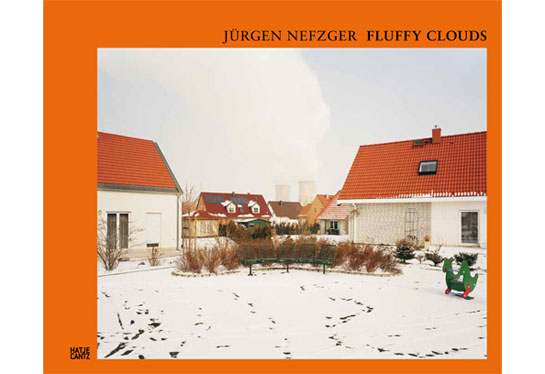Review: Fluffy Clouds by Jürgen Nefzger

A little while ago, Dorothea Hahn, a German journalist whose blog I have been following, moved from Paris to Washington, DC. In her last post from Paris, she reflected upon her time in France, noting that the one thing that had always struck her was how there was basically no French debate whatsoever about the use of nuclear power to generate electricity. If that doesn’t strike you as particularly noteworthy, you have to realize that nuclear power is a highly contentious topic in Germany; in fact a few years back, the German government decided to phase out all nuclear power plants (the current government is trying to walk back from that decision, which has resulted in the Green Party currently polling at around 25%). Whether or not German concerns about nuclear power are justified is a matter of debate. What seems clear, though, is when you look at a nuclear power station, it feels different from looking at pretty much any other industrial site. (more)
Where that feeling is coming from I can’t say. One could speculate. Maybe it is the fact that under normal circumstances (in other words when the levels are not very high) you cannot actually feel nuclear radiation. So you can’t tell whether the power station you’re looking at is working OK or not. In addition, in order to prevent the reactor from overheating and then blowing up - something that happened in Chernobyl - it constantly has to get cooled, for which water is being used (that’s why you find the reactors near bodies of water or rivers). Nuclear reactors thus typically come with cooling towers (if you know the Bechers’ work you’re certainly familiar with those), which tend to emit streams of white clouds.
“Fluffy Clouds” Jürgen Nefzger’s eponymous new book calls them, and since they often merge with actual clouds when seen from the distance, that’s an apt way to describe them. The images in the book, taken with a large-format camera all across Western Europe, are photographs of landscapes. Landscapes, each having a nuclear reactor looming somewhere in the background. How many landscapes with nuclear reactors can you possibly look at, you might wonder, and the answer is: Quite a few. As it turns out, Nefzger stuck to his idea of including a reactor in each image, but there is a considerable variety of landscapes. If you’ve seen one you definitely have not seen them all.
I suppose we could take Fluffy Clouds as an example of what contemporary landscape photography might look like. Or maybe we should just get rid off the “contemporary” altogether. After all, had there been nuclear reactors around at the time of the Dutch Golden Age (a ludicrous thought, I know, but let’s entertain it), they would surely have ended up in the paintings along with the windmills.
But the photography in Nefzger’s book does look contemporary - whatever that might really mean. It is mostly, but thankfully not entirely, devoid of people: For example, there is an image of a group of tourists walking across what looks like an archeological site, with some “fluffy clouds” indicating the presence of a reactor (not visible) in the background, behind a hill. What is more, some photographs contain an element of surprise. In one image, the viewer is looking at a remarkably drab dirt path, a photo taken in the Winter (the trees are bare, and there’s some snow on the ground). Upon closer examination, there are two cooling towers filling up half the sky behind the trees - a rather startling discovery.
Those interested in contemporary landscape photography are well advised to consider Jürgen Nefzger’s Fluffy Clouds as an addition to their photobook collection.
Fluffy Clouds, photographs by Jürgen Nefzger, essay by Ulrich Pohlmann (English/French/German), 144 pages, Hatje Cantz, 2010